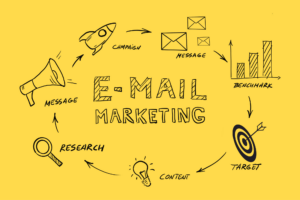You’ve heard all the great benefits of starting a blog to promote your business. And while writing may or may not be your ‘thing’, you quickly begin to realize as you start to research ‘how to create a successful blog’, there is a whole lot more to this than just sharing your ideas or expertise with your tribe.
You have to think about things like ‘Anchor Texts’, ‘Meta Description’, Keywords and ‘Tags’. You see, effective blogging is about creating content that pulls in your ideal audience and turns them into followers (and hopefully customers/clients). To help you get started, we are going to share 9 blogging terms that you must know when creating content for your business blog.
9 Blogging Terms for a Successful Business Blog
1. Long-Tail Keywords
‘Long-tail keywords‘ are the word phrases, typically four or more words, that customers use on search engines to find information related to you, your product or service. As an example, if you are a professional speaker who teaches corporate and small business how to effectively use social media, the folks who want to hire you for their next event are most likely searching for information on ‘Professional social media speakers’ or ‘Corporate Social Media Experts’. Each of these search phrases is a long-tail keyword that you can use to inspire your next blog headline.
The goal of a blog is to not only drive traffic to your website but to also position you as the expert in your area of expertise. You can effectively do that by creating content that is of high value and interest to your existing and potential customers that revolves around keyword phrases you know they’ll be using to find you. The trick, of course, is to choose the right phrases, which you can easily do using free online tools, like Google AdWords, to identify long-tail keywords used by potential customers in your industry, in your country, state, or zip code.
Once you find your long tail keywords, they must be seamlessly interlaced within the blog content a few times (no keyword stuffing please!), and included in the article headline and Meta Description (see below).
Here’s an insightful blog by Neil Patel on how to drive website traffic using long-tail keywords.
2. Tags
Tags are the words that describe the information contained in your blog. As an example, the tags for a blog on making handmade soap at home can be – homemade soap; making soap at home; essential oils for homemade soap; natural soap bar; and methods for making soap. Tags are inserted into the HTML code of your blog and as such not directly visible to a user visiting the site.
Optimizing your content with relevant and useful tags will improve the visitor experience and boost your search engine rankings. However, over-tagging can be detrimental to your efforts of driving traffic. Remember, you need to stay relevant to your customer. Use four or five tags per blog topic, and vary your tags as per the blog you write.
3. Meta Description
A Meta description is the 130 to 160 words blog summary, which appears just below the blog title, on a search engine. A meta description should be appealing enough to generate click-throughs from the search engine page to the blog. One way to achieve that is to write the meta description in the active voice, and include a call to action. Here’s the meta description for this blog that you are reading – Are you thinking about starting a business blog? Make a beginning by understanding these basic blogging terms.
Quick Tip: To make your blog post search engine friendly, include the long tail keyword in both the blog headline and the meta description.
4. Blogging Category
Creating blogging categories makes it becomes easier for readers to scroll to posts that are of interest to them. On our website, for instance, the blogs are categorized under content marketing, virtual assistants, and small business tips. Clicking on any of these headers will give you access to all the blogs written in each of these categories.

5. Anchor Texts
Well-written blogs are informative, engaging pieces of content. One of the tips for effective blog writing is to include (one or two) hyperlinks to other relevant articles published on credible websites. The words that contain the hyperlink in your blog are known as anchor texts.
You can also anchor texts to link to other pages on your website. A common anchor text seen in websites is the ‘Contact Us’ link.
6. Blogging Schedule
A blogging schedule refers to the frequency of publishing blog posts. Publishing fresh content on fixed days of the week (and at a fixed time of the day) is good for your website’s search engine ranking. The other advantage of adhering to a blogging schedule is that your readers know when to expect the next post. For instance, they know that your website publishes fresh content, on Wednesday and Friday, at 10 a.m.
7. Permalink
Permalink is the URL of each blog post. The permalink is an indicator for search engines of the information contained in your blog. You may even improve your website traffic by revising the permalink of existing blogs to include long and short tail keywords relevant to your business.
Check out our quick video on 9 blogging terms, created by MySizzleVideo.
8. RSS
RSS stands for Really Simple Syndication. Enabling RSS on your blog allows visitors to create a link to your website using their RSS feed reader ( e.g. Google FeedBurner). The advantage of allowing an RSS link to your blog is that when you publish a new post, people who have linked to your blog’s RSS feed, will automatically receive an update in their RSS feed.
9. Vlog
Vlog refers to blogs that are primarily video-based. With a simple smartphone, you can record, edit, and upload a video on your website and social media page. Adding videos of your office, shop, staff, business event, or even yourself, as part of the regular textual content on your business blog, is a great way to present a visual persona to your readers. Plus, most customers would rather watch a video on a product, rather than read about it. (Here are some statistics on why video marketing is the way to go in 2017).

There you have it, your first lesson on starting a business blog. Entering the ‘Blogosphere’, which is the universe of all online bloggers, can seem daunting. But the more time you spend on creating engaging content for your business blog, and tracking what’s working and what’s not (using Google Analytics), the more you’ll be able to fine-tune your blogging strategy.
If you don’t have the time to build your business blog, or if you need help to take it to the next level, you’ve reached the right place. We offer three different monthly content marketing packages; pick one that works best for your business. If you need a more tailored solution, drop us a line at moc.c1722078569itksa1722078569triv@1722078569selas1722078569, and we’ll be in touch.









Hi, I am Venkata Panchumarthi. I read this article and it is very informative. I like the way you explained about the topic. Thank you so much for sharing all this wonderful info. It is so appreciated!!!